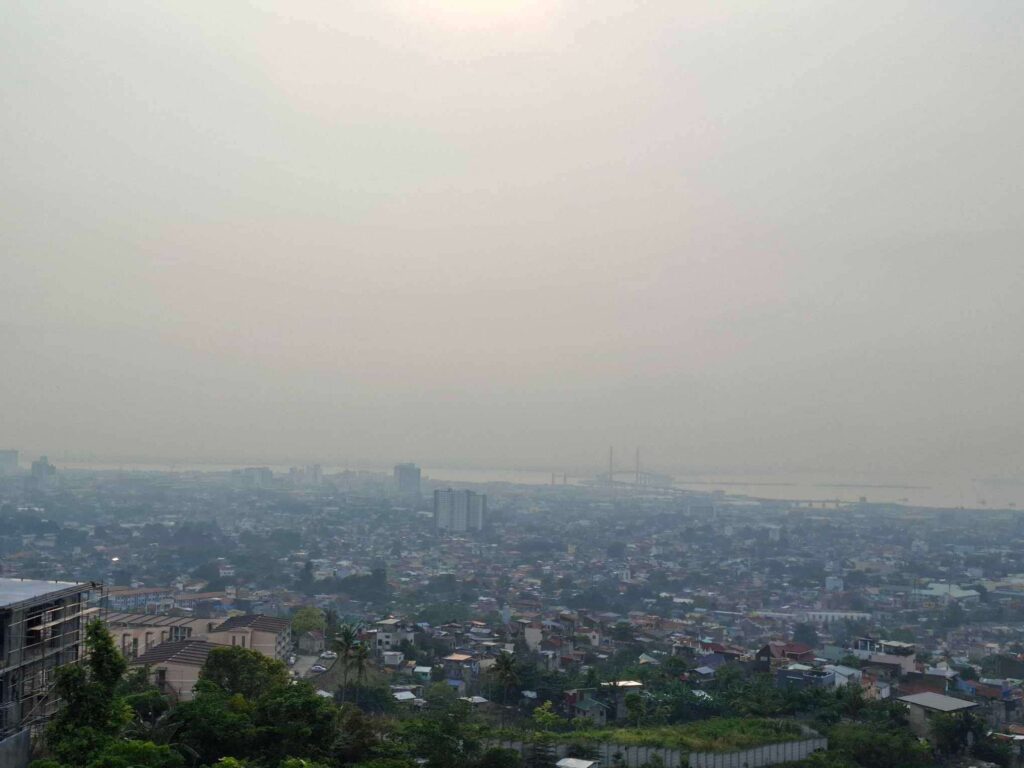
A photo taken on Thursday, Nov. 14, shows a slight haze hovering over the skyline of Cebu City, as earlier confirmed by Pagasa-Mactan.
CEBU CITY, Philippines – The light haze detected in Cebu City on Thursday, Nov. 14 may prevail until Friday, the state weather bureau said.
The Philippine Atmospheric Geophysical and Astronomical Services Administration in Mactan (Pagasa-Mactan) said that the city may still experience poor visibility on Friday, Nov.15.
According to Romeo Aguirre, weather specialist at Pagasa-Mactan, their forecasts showed that Cebu will unlikely experience any strong wind that would help dissipate the haze.
“Wala gyud tay hangin baya karun (Nov. 14) ug ugma so among gipaabot nga mu-prevail ni then by the weekend, naa tay gamayng hanging tungod sa presence sa bagyo, hopefully mao kini makadisperse sa pollution,” Aguirre said.
Pagasa-Mactan said the haze began last Wednesday, Nov. 13, when they observed poor visibility over Cebu City.
In meteorology, visibility refers to the distance at which an object or light can be seen from a certain point.
Wednesday’s visibility in Cebu City from Pagasa-Mactan’s station was reduced from 10 kilometers to eight kilometers due to the presence of haze.
READ MORE
Light haze blankets Cebu City, Pagasa confirms
‘Sulfur dioxide haze’ in Cebu? Pagasa-Mactan says there’s none
Haze is a form of air pollution.
It occurs when quantities of extremely small, dry particles that are invisible to the naked eye remain suspended in the air, and therefore create an opalescent appearance, according to the World Meteorological Organization.
While the haze experienced in Cebu City does not pose any problems for aviation, experts urged those with health issues to take safety precautions.
Air quality monitoring tool AirVisual of Swiss air technology firm IQAir reported that on Thursday morning, air pollution in the city is 2.6 times the WHO (World Health Organization) annual air quality guideline value.
This means people with respiratory problems like asthma need to protect themselves by wearing face masks when going out.
Meanwhile, local experts continue to identify the source of haze in Cebu City but Pagasa-Mactan believed it may have come from the continued degassing of nearby Mt. Kanlaon in Negros Island. —with reports from Futch Anthony Inso
/clorenciana